Scientists put all different face masks, that are used against Covid-19, under a microscope. These are the results.
The face masks work by blocking some of the virus-filled droplets and smaller particles, called aerosols, that an infected person exhales, and they also offer some protection to the wearer by filtering incoming air. They wanted to know how well different fabrics filter out those particles and what makes some fabrics better filters than others.
Their research indicates that that cotton fabrics tend to perform better than synthetics, with cotton flannels being particularly effective. After being exposed to the moisture in a person’s breath, cotton fabrics perform better still.
Above image: Polyester is a synthetic material that, like many fabrics, is made up of individual fibers bundled into yarns then woven together. This image shows the cross-sectional shapes of the individual fibers. The researchers used images such as this one to measure the width of the individual fibers — a key variable that affects particle filtration. Credit: E.P. Vicenzi/Smithsonian’s Museum Conservation Institute and NIST
New Airflow Videos Show Why Masks With Exhalation Valves Do Not Slow the Spread of COVID-19:
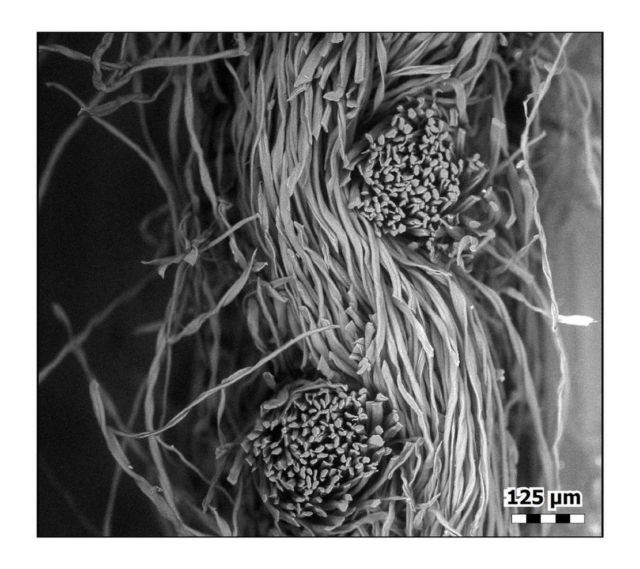 Credit: E.P. Vicenzi/Smithsonian’s Museum Conservation Institute and NIST
Credit: E.P. Vicenzi/Smithsonian’s Museum Conservation Institute and NIST
This image shows the cross section of a cotton flannel and its over/under weave. In addition to measuring the width of individual fibers, the researchers used images like this one to measure the thickness of the fabrics — another important variable that affects their ability to filter particles.
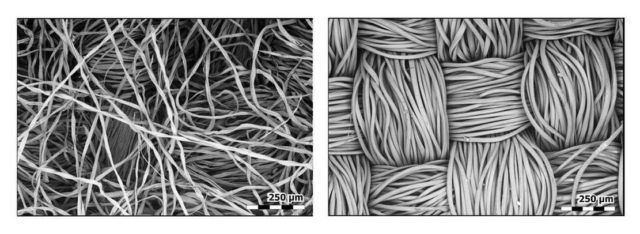 Credit: E.P. Vicenzi/Smithsonian’s Museum Conservation Institute and NIST
Credit: E.P. Vicenzi/Smithsonian’s Museum Conservation Institute and NIST
This image shows top-down views of cotton flannel (left) and polyester (right). The weave of the cotton flannel is hidden below a disorganized network of crisscrossing fibers. These raised fibers make flannel feel soft to the touch. In contrast, the fibers in this polyester are very organized and consistent.
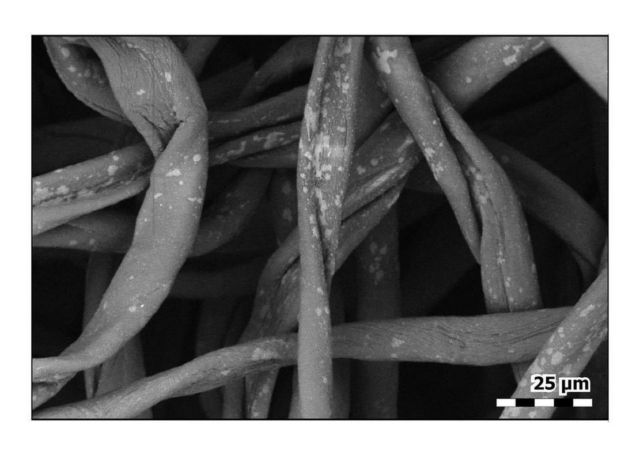 Credit: E.P. Vicenzi/Smithsonian’s Museum Conservation Institute and NIST
Credit: E.P. Vicenzi/Smithsonian’s Museum Conservation Institute and NIST
This image shows the individual fibers in cotton flannel. When you breathe through a mask, the air flows around these fibers and the aerosols are pulled along for the ride. The aerosols can be very small, but they do have some mass.
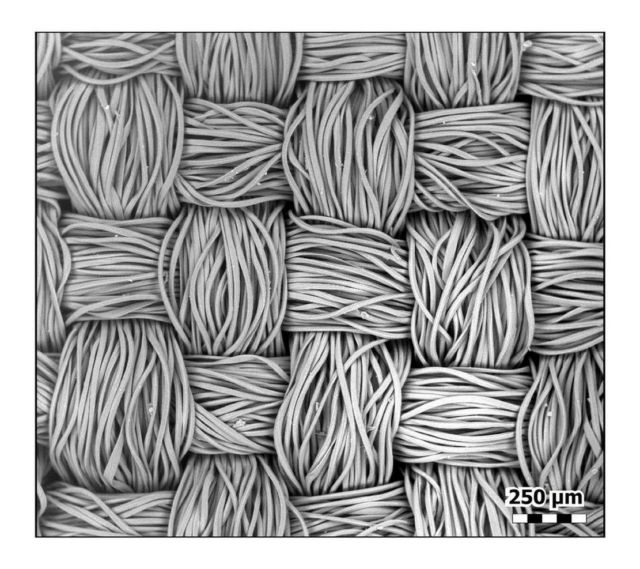 Credit: E.P. Vicenzi/Smithsonian’s Museum Conservation Institute and NIST
Credit: E.P. Vicenzi/Smithsonian’s Museum Conservation Institute and NIST
This top-down view of polyester shows how the fibers stay nicely bundled. This image is from the same type of fabric as those quick-drying shirts you might wear to the gym.
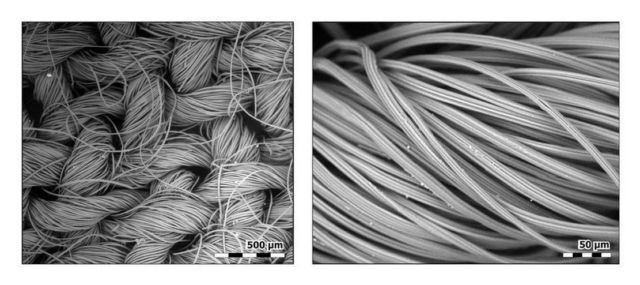 Credit: E.P. Vicenzi/Smithsonian’s Museum Conservation Institute and NIST
Credit: E.P. Vicenzi/Smithsonian’s Museum Conservation Institute and NIST
Some fabrics are harder to categorize. Rayon is considered synthetic, but it is derived from plants. To create it, manufacturers treat plant material such as bamboo with chemicals.
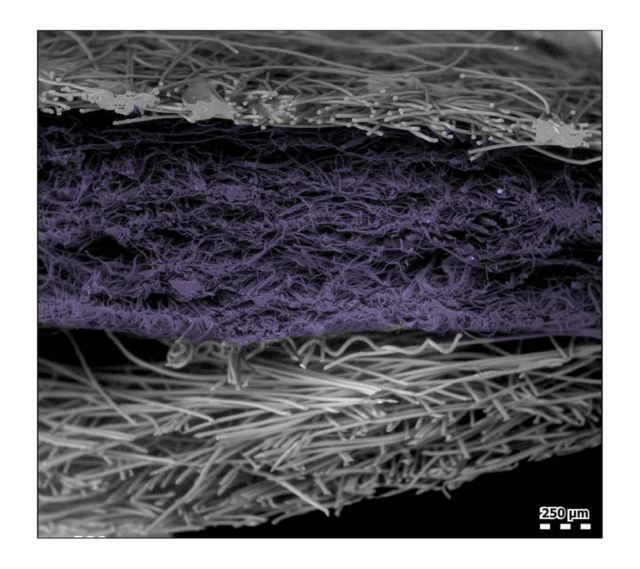 Credit: E.P. Vicenzi/Smithsonian’s Museum Conservation Institute and NIST
Credit: E.P. Vicenzi/Smithsonian’s Museum Conservation Institute and NIST
While cotton is best for the fabric masks that the general public uses, medical-grade masks are a different story. This false-color image shows a cross section of one layer of an N95 respirator mask, including filtering material, shown in purple, and protective material around it. This layered structure then repeats for added protection. The filtering material is made by melting and then air-blowing polypropylene, a type of plastic, into a chaotic web. The fibers are far smaller and have much greater surface area than cotton fibers, which is one reason this is an especially effective filtering material.
source NIST

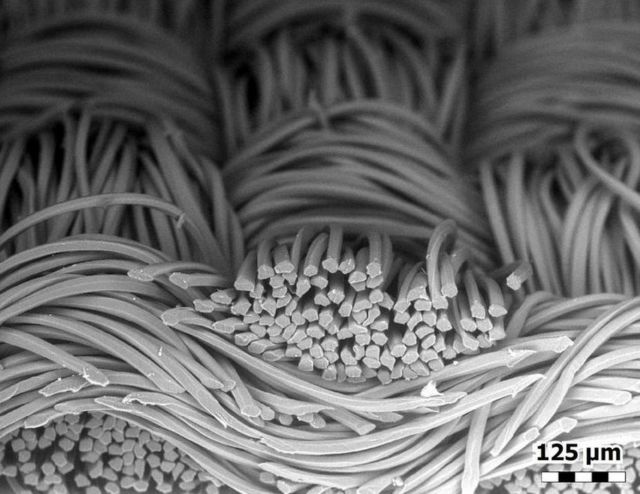




Leave A Comment